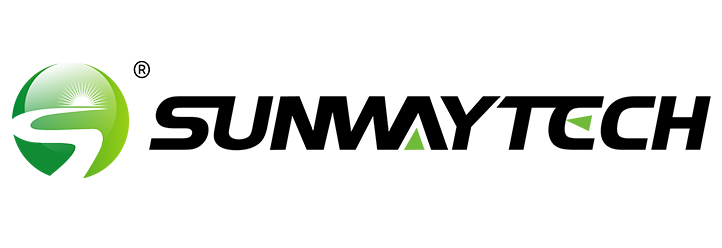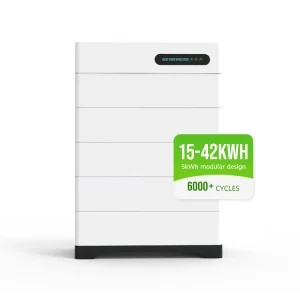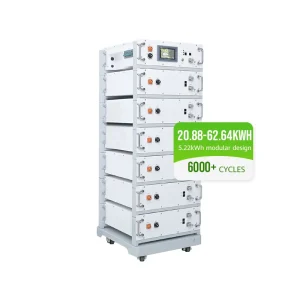Solar energy has been a burgeoning field of research and development as people are looking for a more efficient, cost-effective, and eco-friendly system. Improving solar panel efficiency is one of the key research focuses and has led to the emergence of various solar cell technologies.
This article will focus on the solar cell structure, giving a comprehensive analysis of N-type vs. P-type solar panels and exploring how their differences translate into performance outcomes in real-world applications.
Table of Contents
ToggleWhat is the Solar Cell?
Before we reach the comparison of N-type vs. P-type solar panels, it is important for us to learn what exactly a solar cell is.
Solar cells are also called photovoltaic cells. Usually, they are a few centimeters in size and are covered with a thin layer of glass or transparent plastic for protection. It can be said that they are the building blocks of solar modules, or solar panels, and are responsible for power conversion from solar power to electricity through the photovoltaic effect.
When looking into their structure, they are mainly constructed with two types of semiconductor materials, N-type and P-type silicon. The N-type silicon is usually produced by adding phosphorus, which brings extra free electrons; meanwhile, the P-type silicon is usually produced by adding boron, which can help create an electron vacancy (hole). Together, these two semiconductors create the P-N junction.
The sunlight hitting the solar panels can empower the electrons to move to another side. Paired with the electric field created by the P-N junction, solar cells create an electric current that can power the external circuit.
Difference between N-Type and P-Type Solar Panels
1.What are N-type Solar Panels?
N-type solar panels feature the bottom/ base layer doped with phosphorous and the top layer doped with boron. It means that the N-type solar panel’s bulk c-Si region is a negatively charged layer. Additionally, they can be produced with various techniques, such as TOPCon (Tunnel Oxide Passivated Contact), IBC (Interdigitated Back Contact), and HJT (Heterojunction). In the comparison of N-type vs. P-type solar panels, some advantages and disadvantages of N-type solar panels are:
Advantages
- Higher efficiency (can be around 26%).
- No light-induced degradation.
- Longer performance warranty.
- Better performance in high temperatures.
- Higher resistance to radiation.
- Better bifacial performance.
- Lower susceptibility to impurities.
- Better performance in low-light conditions.
Disadvantages
- Higher production costs.
- More complex manufacturing process.
- Limited market availability.
- Higher initial investment.
2.What are P-type Solar Panels?
Different from N-type solar panels, P-type solar panels are characterized by a boron-doped bottom layer and a phosphorous-doped top layer. Such a construction means the bulk c-Si region is a positively charged layer. Typically, P-type solar panels can be manufactured with techniques like the PERC (passivated emitter rear contact) technology and the Al-BSF (aluminum back surface field) technology. When assessing N-type vs. P-type solar panels, P-type PV modules tend to have the following advantages and disadvantages:
Advantages
- Lower production costs.
- Established manufacturing process.
- Wide market availability.
- Lower initial investment.
- Sufficient performance for many applications.
- Mature technology.
Disadvantages
- Light-induced degradation.
- Lower efficiency.
- Shorter performance warranty.
- Higher susceptibility to boron-oxygen defects.
- Lower performance in high temperatures.
- Lower bifacial performance.
Then, which is better, N-type or P-type solar panels? It can be concluded that N-type panels are better for long-standing performance and reliability. At the same time, P-type panels may suit cost-sensitive applications.
SUNWAY N-Type TOPcon 144 Cells 565W-585W
The above aims to give you key information about “N-type vs. P-type solar panels.” As a leading solar product manufacturer, Sunway offers high-efficiency panels, including the N-type solar panel. For instance, our SUNWAY N Type TOPcon 144 Cells 565W-585W is one of the exceptional photovoltaic products.
With leading N-Type TOPCon 144 cells, it features a high efficiency of 22.65% and delivers a power output of 565W to 585W. Additionally, this solar module is perfect for outdoor scenarios due to the following features:
- A wide operating temperature range from -40℃ to +85℃
- A maximum front static load of 5400 Pa (112 lb/ft²)
- A maximum back static load of 2400 Pa (50 lb/ft²)
With full confidence, we offer you an impressive 12-year product warranty and an extended 30-year linear power output warranty, ensuring long-term value and peace of mind.
Conclusion
Here, we reach the end of this article-themed N-type vs. P-type solar panels. But if you have further doubts about your photovoltaic projects, feel free to contact us for more professional knowledge. Sunway offers one-stop photovoltaic solutions and has helped many clients across the globe, like in South Africa and the Middle East. Explore Sunway for more product information, and we are more than happy to help you solve problems!







